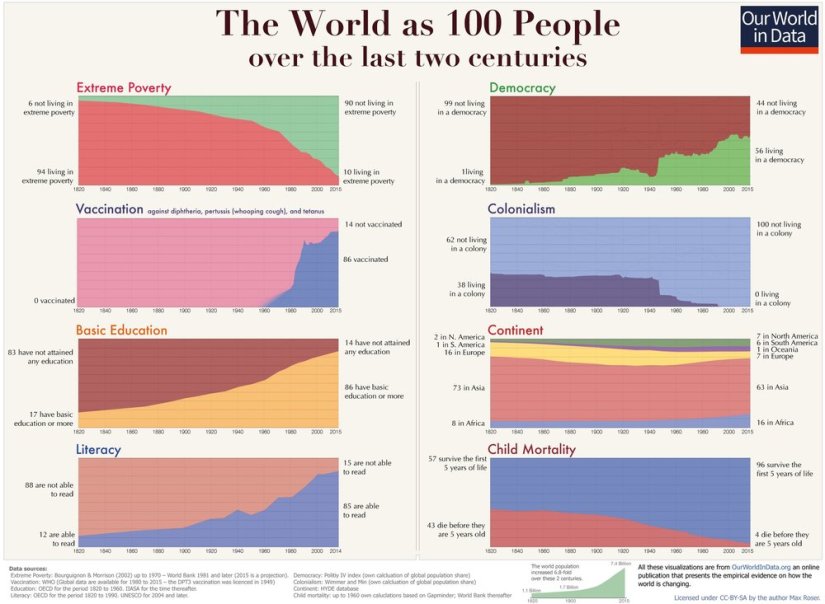
Every now and again, I think we should remember where we truly are, what we have achieved and what we still should improve. In the daily routines of never ending news, demands and requests, we tend to forget our true situation and our endless opportunities.
Here are 7 reminders, purposefully published around Christmas, a time to traditionally stop for a moment and reflect.

- Overall, we live in the best world ever. Almost all indicators for our health, wellbeing, safety, life expectancy, etc. go up constantly (see graph). This truth contradicts the flood of negative news reaching us each and every minute. I’m not denying all the tragedy that is actually happening; however, there has never been a better time in history.
- Each of us can change a lot. Yes, we are powerful beyond belief, and today we have more means than ever to make this world a better place. You can reach millions of people in a heartbeat. Each of us in this part of the world can publish books, can speak up, can DO something. How have you made this world better this year?
- You are a role model. Yes, each of us acts as a role model for others, whether you like it or not. Which standards do you want to demonstrate to others? It’s always your choice.
- Productivity is a duty. I assume you want to do good things, so it’s best you do as much of them as possible. There is nothing brave in wasting time and not being as productive as possible.
- We have access to more knowledge than ever in history. Make use of it! Each day, learn and apply. Don’t wait for somebody telling you what to learn. Go ahead and feed your brain! Each day.
- We become what we do repeatedly. It’s best you choose habits that positively define you.
- Our life is short and limited. It’s best you start doing something meaningful today. “Someday” equals “never”.




